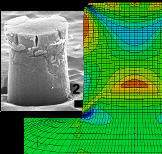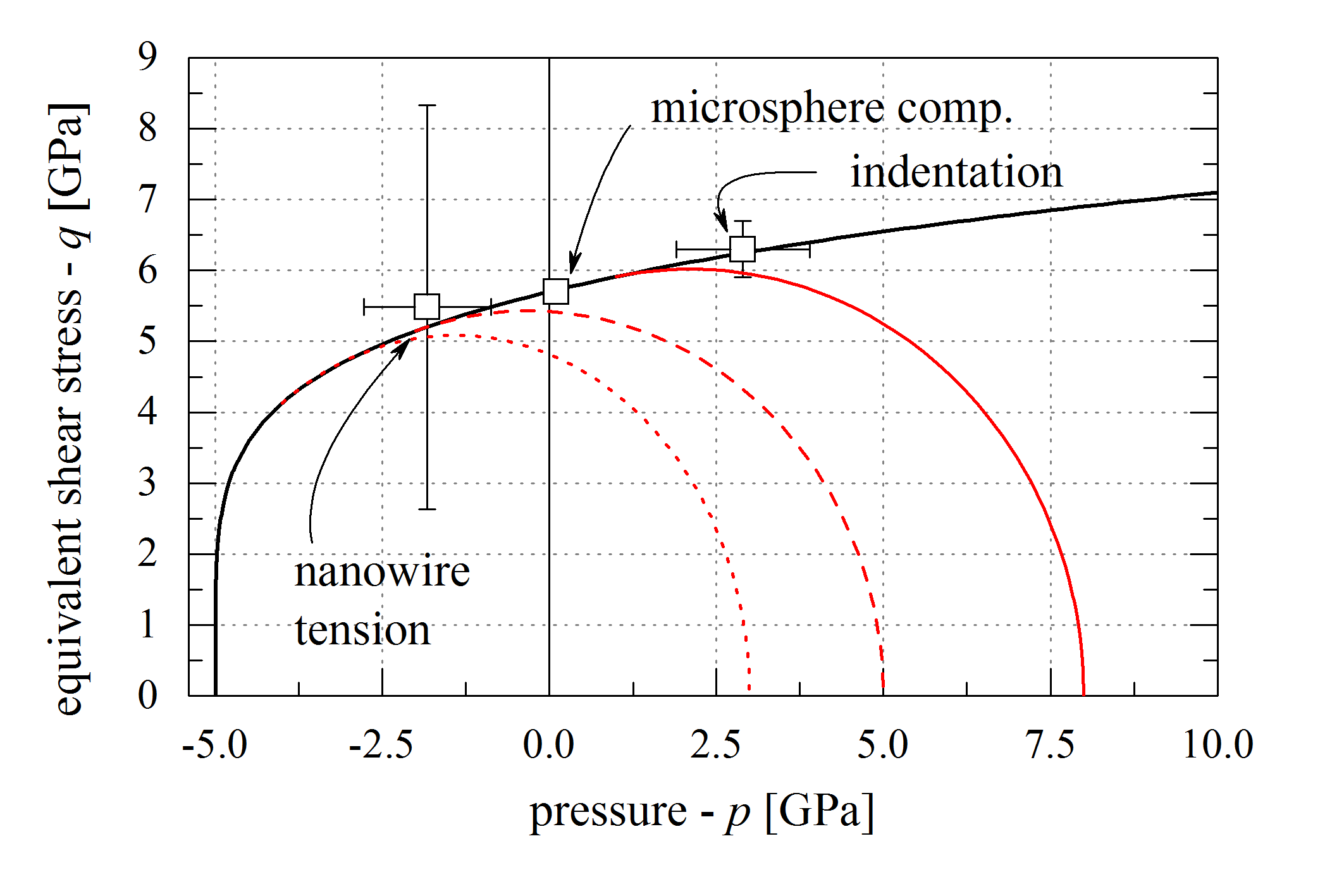Accueil > Plastic deformation of amorphous silicates > Numerical experiments - another way to build up constitutive relations
Numerical experiments - another way to build up constitutive relations
vendredi 12 janvier 2018, par
There is only a limited number of experiments which can provide data suitable for the design of constitutive relations for amorphous silicates. However, numerical simulations can also help along the way.
Within the MultiSil consortium, we have pioneered the use of molecular dynamics (MD) to emulate typical calibration experiments which cannot be performed (yet) with amorphous silicates, such as plastic deformation in pure shear [1]. The key idea is that with MD, we can obtain structure information al along the deformation path, so that in principle, the internal variables parametrizing the deformation can be determined.
Figure : typical yield surface for sodosilicate glasses, with impact of strain hardening (in red) and loading states depending on test configuration.
In our recent work, the approach has been extended to depolymerized silica networks, in an attempt to model sodosilicate glasses [2]. The results have led us to develop a more elaborate functional form for the yield surface of silicate glasses [3]. We hope future experiments can provide quantitative data for identification of the parameters !
[1] Impact of pressure on plastic yield in amorphous solids with open structure
Mantisi, B. ; Kermouche, G. ; Barthel, E. ; Tanguy, A.
Physical Review E 93 (2016) 033001
[2] Densification dependent yield criteria for sodium silicate glasses - An atomistic simulation approach
Molnar, Gergely ; Ganster, Patrick ; Tanguy, Anne ; Barthel, Etienne ; Kermouche, Guillaume
Acta Materialia 111 (2016) 129-137
[3] Plastic response of amorphous silicates, from atomistic simulations to experiments - A general constitutive relation.
Molnar, G. ; Kermouche, G. & Barthel, E.
Mechanics of Materials 114 (2017) 1-8
 MultiSil
MultiSil